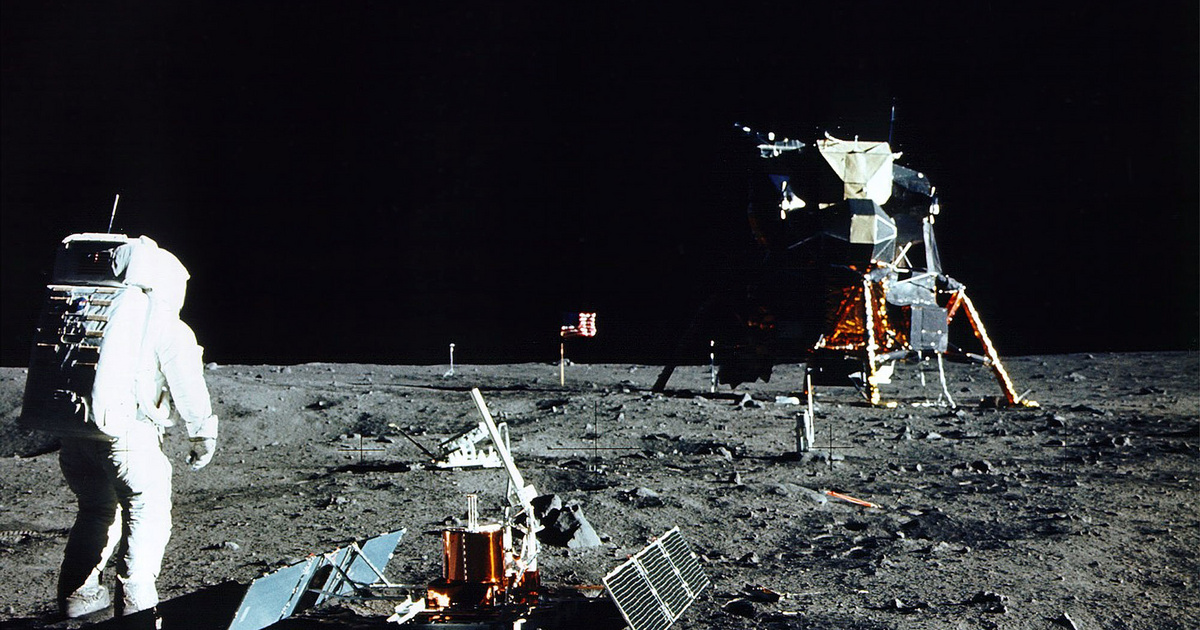In November 1969, one of the main missions of the Apollo 12 lander was a precision landing. It did so successfully: it landed just 160 meters away from the Surveyor-3 robotic probe that had been there for two years. When the American astronauts headed towards the probe, they found it covered in thick dust. On the parts of the device that were returned to Earth, it was clear that sandblasting had caused extensive damage to it, with larger pieces of the moon's surface creating craters directly on its surface.
Sandblasting is a popular surface cleaning method patented in 1870, through which rust, burrs and paint can be removed from a metal object with particles transmitted in high-pressure air using suitable insulation or protective clothing.
As NASA specialists saw in 1969, things work similarly on the Moon, but much rougher. Part of the problem is that lunar dust is aggressive. Compared to the grains we are used to, which are eroded and rotated by water, wind and motion, lunar dust is sharp and prickly, which is why it damages equipment and spacesuits faster and severely irritates astronauts' noses and eyes. Astronauts.
As part of the Apollo program, it was estimated how quickly and how much dust the flame jet kicked up from the rocket's movements over half a century. Physicist Phil Metzger recently published two scientific papers in which he tried to show that contemporary calculations do not agree with empirical experience. As it turns out, the situation is much worse than we thought so far, but this is exacerbated by the fact that spaceships have become larger in the meantime.
Who was hit by missile smoke
In 1963, Welsh-born NASA researcher Leonard Roberts made the first calculations on the consequences of a collision between a landing rocket and dusty ground. The calculations included the direct extent of the plume, as well as estimates of the material moved by the plume spreading along the ground.
Later calculations, based on Roberts' work, in 2015 found that Apollo 12 blew up about 2.6 tons of dust during landing.
However, there were gaps between the numbers and the measurements, so Phil Metzger spent years on planes moving in parabolic orbits, modeling the interaction of the nozzle and the Earth in weightlessness for 10 seconds. The expert's experiment showed that the erosion of the crater formed under the missile was constant, but the amount of particles was rich in the leaking gas.
He found that gas moving at a very high speed above the surface does not hit the ground on its own, but rather a small part of it penetrates between the molecules, and when kinetic energy is released in this way it lifts a particle larger by a quarter of a millimeter, which is caught in the flow. Although this does not seem to be a serious factor, it leads to significant differences when calculating the range of a rocket engine. Metzger's theory is supported by the fact that the Apollo 16 astronauts died mainly due to dust that rose during landing.
They couldn't see the surrounding surface.
According to new calculations, the mass of the shaken material could range between 11 and 26 tons. We only have to take into account that the weight of the landing modules for the Apollo program was 7.5 tons, and according to current plans for the Artemis program to return to the moon, the SpaceX Starship vehicle will land with a weight of more than 100 tons.
Legal implications of shake powder
The 1967 Outer Space Treaty, the most widely accepted international agreement regulating activities in space, is vague in places as to its age requirements, and of course is already quite outdated in some places.
We are a far cry from the 1960s, as one of the risks in the space race between China and the United States is the establishment of a permanent base on the moon. Naturally, such a base includes a solid, dust-free landing area, which protects the surrounding infrastructure, as landing on dust is unacceptable in the environment of such bases.
A technical possibility to mitigate buoyancy problems would be to place the landing module engine far from the surface, at the top of the vehicle. This is where Starship is currently being developed.
On the moon according to the Outer Space Treaty
No country can claim its own territory.
But in 2011, the United States came out with the reasonable request that no one should land within 2 kilometers of the Apollo program landing sites, which constitute the historical heritage of humanity, so as not to swallow the relics by gray lunar dust. . As other devices from other countries arrive, and will continue to arrive in space over the years, memories multiply, and free landing spots even without one's own region are quickly diminished.
One of Phil Metzger's concerns is the possibility of a new competition emerging, in which unscrupulous competitors use a series of landing units equipped with sensitive instruments to secure a safe zone from human bases searching for water. All of this leads to the issue of lunar mining, where the guiding principle is that the lander and its immediate environment can be privatized and mined as a historical monument.














































